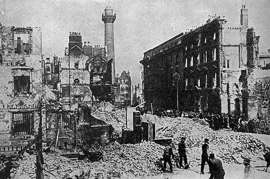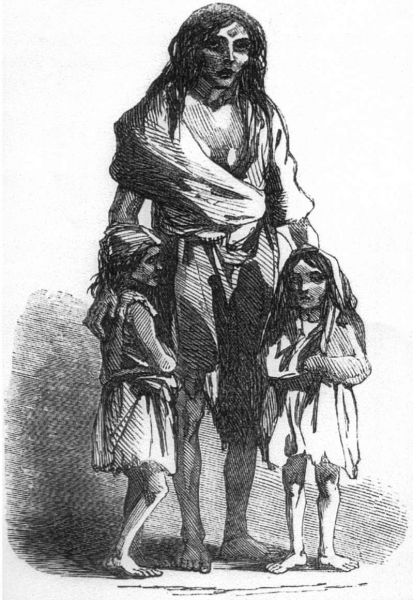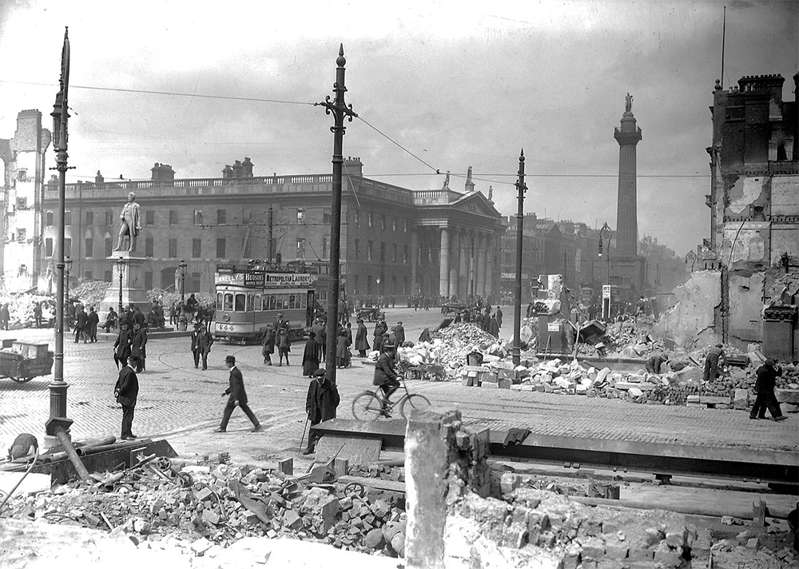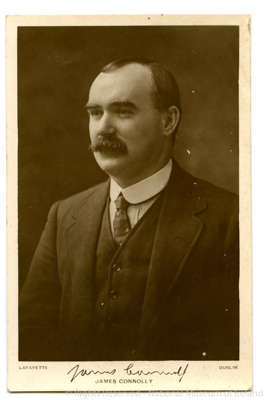
O'Connell Street after the uprising. 1916 year.
The power of the British Empire was based not only on the talents and hard work of the inhabitants of Foggy Albion, but also on the cruel exploitation of territories that fell under the rule of the crown.
Colonization
All the delights of British rule were the first to be experienced by the Irish. The conquest of Ireland by the British began in the XII century. The situation worsened during the Reformation – the majority of the Irish remained Catholics, which also brought a religious factor into the confrontation.
During the Civil War in England, the Irish supported Charles I, which turned into a punitive expedition for them led by Oliver Cromwell. The Irish were killed or driven from their native lands, handing them over to English settlers. As a result, in 1641-1642 the population of the island decreased from 1.5 million to 850 thousand people.
English colonization meant that by the last quarter of the 18th century, Catholics owned only 5 percent of the land. In 1801, Ireland lost its parliament.
You can't live like that
The lack of rights of the Irish on their own land led to monstrous tragedies. During the Great Famine of 1845-1849, about 1.5 million people died, and about the same number emigrated from the country. The consequences of what happened continued to affect in the future: if in 1841 about 8.2 million people lived in Ireland, then in 1901 there were no more than 4.5 million of them.
The national movement in Ireland was divided into a moderate majority and a revolutionary minority. The first advocated the provision of self-government peacefully. The revolutionaries intended to gain independence through armed struggle.
The situation was further complicated by the existence in the north of Ireland of a movement of unionists who insisted on maintaining the established order of things. Unionists, backed by London, created their own armed groups. The response to this was the formation of detachments of supporters of independence.

Great hunger. Engraving depicting Bridget O'Donnell expelled from home with her children for non-payment of rent.
Will the war write off everything?
Things were heading for a civil war in Ireland, but that changed after the First World War broke out in August 1914. Irish opinions were divided – some believed that feuds should be postponed by joining the fight against an external enemy; others, on the contrary, believed that this was an exceptional case of regaining freedom.
Supporters of the uprising hoped for massive support from the population, but it was not observed. Over time, however, the picture has changed. The more Irish went to the front, the more the discontent of those who remained grew. The Irish revolutionaries were a very motley campaign, from nationalist Republicans like Tom Clark to socialist Marxists like James Connolly. With great difficulty they managed to find a common language. Nevertheless, at the beginning of 1916, a general plan of action was developed. The rebels were going to seize key buildings in major cities, primarily in Dublin, declaring independence. The revolutionaries believed that they could rely on the support of the population, as well as on the help of Germany, whose representatives promised to assist the Irish movement.
All around chaos
But it all went wrong. A German ship with weapons was intercepted by the British fleet. This failure caused ferment among the leaders of the uprising – some of them decided to refuse to speak. Others believed that there was no longer any choice: the British received information about the upcoming march and were about to begin mass arrests. In the early morning of April 24, 1916, the day after Easter, the uprising began. About 1,200 Irish fighters began to take control of buildings in downtown Dublin. The headquarters of the rebels was the building of the General Post Office, where the Proclamation on the Establishment of the Republic was read. But they failed to take Dublin Castle, where the British administration was located. In addition, many residents of the city were frightened by the actions of the rebels and tried to prevent them. In general, the first day of events showed that no one was ready for what was happening – the rebels acted too timidly, wasting precious time, and the government forces did not at all understand what was happening, confining themselves to intelligence.

O'Connell Street and the General Post Office building in May 1916
Guns versus rifles
On April 25, the British governor Lord Wimborne declared martial law in the country. All powers of power were transferred to the hands of Brigadier General William Lowe. He first of all blocked the facilities occupied by the rebels. After that, the authorities began to bring additional forces to Dublin. Over the course of several days, over 16,000 soldiers and officers were concentrated in the city. Without seeking an assault, the British used artillery and machine guns, methodically destroying buildings occupied by the rebels. Where the British nevertheless decided to act actively, they immediately began to suffer heavy losses. When trying to cross the canal in the Mount Street area, British troops lost more than 200 people killed and wounded, while the rebels in this direction lost only four fighters. The irritated British officers resorted to their usual tactics in such cases: increased artillery fire and began to shoot civilians, accusing them of involvement in the riot. The leaders of the uprising understood that situations were losing for them. The building of the Central Post Office had to be abandoned because of the fire that began in it. On April 29, 1916, the leaders of the uprising decided to surrender. Further sacrifices made no sense, and the tactics of the British actions only multiplied the casualties among the peaceful Irish.
Punishment for troublemakers
During the suppression of the uprising, British troops lost 132 people killed and 397 wounded. The rebels lost 64 people killed and several hundred wounded. Most of all, civilians suffered – 254 killed, more than 2,200 wounded. The lack of real results, the loss of life and destruction caused most Irish people to anger against the rebels. But the punitive measures of the British government changed the situation. More than 3,500 people were arrested, of whom almost 1,500 were interned in Wales and England. Among them were many who did not participate in the uprising. From 3 to 12 May 1916, executions of leaders and active participants in the events took place. Socialist James Connolly was seriously wounded during the fighting, but this did not stop him from being sentenced to death. Due to the injury to his leg, the politician could not walk, so he was brought to execution on a stretcher, and in order to carry out the execution, Connolly was tied to a chair.

James Connolly.
“All efforts will be in vain if you do not start building a socialist republic.”
The fact that the socialist was dealt with with particular cruelty is not accidental. He looked much further than others, remarking: “Even if tomorrow you get rid of the British army and hang a green banner over Dublin Castle, all your efforts will be in vain if you do not start building a socialist republic. England will still rule you. She will rule through her capitalists, landlords, financiers, through the host of commercial and individual institutions that were raised here and watered with tears of mothers and blood of martyrs. ” It was decided in London that such a seditious person should die a painful death. But these tortures made the Irish look at Connolly and his associates differently. The executed rebels were very quickly raised by the people to the rank of heroes. Despite the rapid suppression of the uprising, London could not change the situation in its favor. Already in 1919, new armed actions began, which in 1921 ended with the signing of the Anglo-Irish treaty. It provided for the creation of the Irish Free State as the British dominion. This was a big step towards gaining complete independence. And the events of April 1916 certainly played a role in changing the fate of Ireland.

